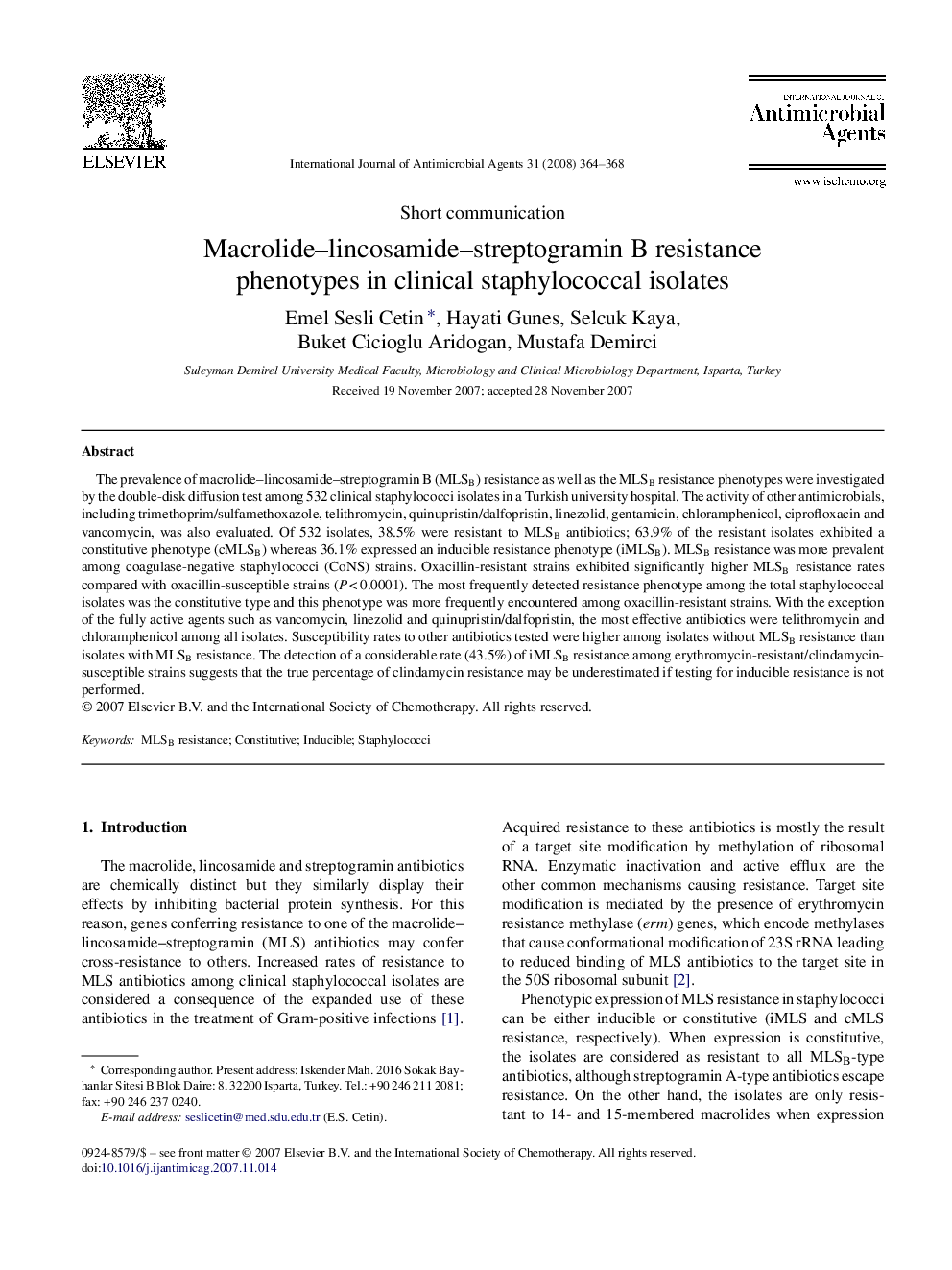| Article ID | Journal | Published Year | Pages | File Type |
|---|---|---|---|---|
| 3360646 | International Journal of Antimicrobial Agents | 2008 | 5 Pages |
The prevalence of macrolide–lincosamide–streptogramin B (MLSB) resistance as well as the MLSB resistance phenotypes were investigated by the double-disk diffusion test among 532 clinical staphylococci isolates in a Turkish university hospital. The activity of other antimicrobials, including trimethoprim/sulfamethoxazole, telithromycin, quinupristin/dalfopristin, linezolid, gentamicin, chloramphenicol, ciprofloxacin and vancomycin, was also evaluated. Of 532 isolates, 38.5% were resistant to MLSB antibiotics; 63.9% of the resistant isolates exhibited a constitutive phenotype (cMLSB) whereas 36.1% expressed an inducible resistance phenotype (iMLSB). MLSB resistance was more prevalent among coagulase-negative staphylococci (CoNS) strains. Oxacillin-resistant strains exhibited significantly higher MLSB resistance rates compared with oxacillin-susceptible strains (P < 0.0001). The most frequently detected resistance phenotype among the total staphylococcal isolates was the constitutive type and this phenotype was more frequently encountered among oxacillin-resistant strains. With the exception of the fully active agents such as vancomycin, linezolid and quinupristin/dalfopristin, the most effective antibiotics were telithromycin and chloramphenicol among all isolates. Susceptibility rates to other antibiotics tested were higher among isolates without MLSB resistance than isolates with MLSB resistance. The detection of a considerable rate (43.5%) of iMLSB resistance among erythromycin-resistant/clindamycin-susceptible strains suggests that the true percentage of clindamycin resistance may be underestimated if testing for inducible resistance is not performed.
